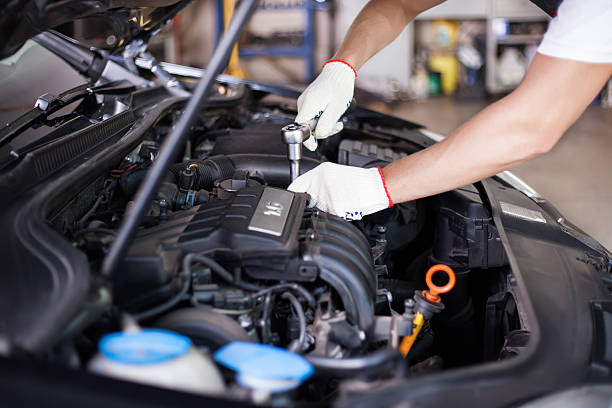Have you ever wondered how the Car Repair and Maintenance Service Milwaukee handles engine issues? Keeping your car running smoothly is essential. Here, we explain how professionals diagnose and repair engine problems. We will cover everything from initial checks to final testing. To start, it’s important to know that mechanics are like doctors for your car. They use their skills to find and fix problems so your car can run safely and efficiently. In Milwaukee, these experts are well-equipped to ensure your engine is in top shape, using the latest tools and techniques.
1. Initial Checks by Car Repair and Maintenance Service
When you bring your car in, the first step is an inspection. Mechanics look for obvious signs of engine trouble. They listen to your engine’s sounds and check for leaks or unusual smells. They also examine the engine oil and coolant levels because these fluids are crucial for your engine’s health. Low levels can indicate leaks or the engine consuming too much oil.
2. Diagnostic Testing
Next, mechanics use advanced tools to find out what’s wrong. They connect a diagnostic tool to your car’s computer system. It shows error codes that help identify the issue. Furthermore, these tools can provide real-time data about the engine’s performance, helping to pinpoint problems that are not obvious at first glance. A skilled mechanic Milwaukee uses this technology to quickly and accurately diagnose issues, ensuring that any repairs made are exactly what your car needs to run smoothly and efficiently.
3. Verifying the Problem
Once they have the error codes, mechanics check these against their experience and databases. It helps confirm the exact engine problem. Also, they may perform additional tests, like compression tests, to ensure they understand the problem fully. This step is critical to avoid misdiagnosis and unnecessary repairs.
4. Proposing a Fix
After identifying the issue, mechanics suggest a repair plan. They explain what needs fixing and how they will do it. They also provide a cost estimate. In addition, they will inform you how long it will take to complete the repairs, ensuring you know how long you will be without your vehicle.
5. Replacing Parts
If parts need replacing, mechanics use quality replacements. They make sure these parts match your car’s specifications. It ensures your engine runs as it should. They also dispose of old parts responsibly, taking care not to harm the environment. The car repair and maintenance service Milwaukee prioritizes using parts that enhance your car’s performance while being environmentally conscious. They ensure that every part, from filters to belts, perfectly suits your car’s needs, promoting longevity and reliability.
6. Repair Work
The actual repair work begins. Mechanics take apart the necessary sections of your engine. They replace or repair damaged parts with precision. During this process, they keep everything organized to ensure no parts are misplaced or forgotten when reassembling the engine.
7. Quality Checks
Throughout the repair process, mechanics perform quality checks. It ensures that everything they fix or replace meets safety standards. They also check that all parts work together correctly, which is crucial for the engine’s overall performance.
8. Auto Mechanic Expertise in Engine Reassembly
After repairs, mechanics put your engine back together. They make sure every component is correctly installed and secured. They use new gaskets and seals during reassembly to prevent leaks and ensure everything is sealed properly. When looking for an Auto Mechanic near me choosing one who pays close attention to these details is crucial. Proper reassembly is vital to ensure that no small issue becomes a big problem later, keeping your car running reliably for years.
9. Testing
Once your car is back together, testing follows. Mechanics run your car to ensure the engine performs correctly. They look out for any unresolved issues. This testing might include a road test to see how the car performs under various conditions, ensuring that all repairs have effectively addressed the problem.
10. Final Review and Customer Feedback
Finally, mechanics review their work with you. They explain what was done and why. They encourage you to provide feedback on the service. It helps them to improve their service and ensures you are completely satisfied with the work done. Additionally, they might offer advice on maintaining your engine to avoid future issues.
Conclusion
Car repair and maintenance services follow a detailed process to fix engine issues. From the initial inspection to the final testing, every step is crucial. Professionals ensure they deliver a car that runs perfectly. Next time your engine has a problem, you know what processes your car will go through. Choose a trusted service to keep your car in top shape. This guide shows how professional mechanics handle engine repairs, adding value and peace of mind for all car owners. Mechanics work hard to ensure every customer drives away happy and safe.


